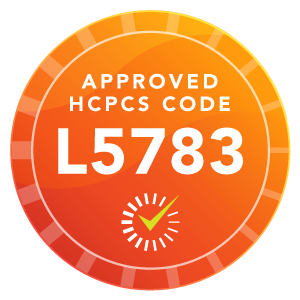It took me 17 years to open my private practice for amputees.
Why did it take me so long?
It wasn’t because I was nervous about my skills as a PT…
Or because I was afraid of failure (I’m actually quite comfortable with the notion of failing at something, but that’s another blog!)
It was because I couldn’t wrap my head around insurance and reimbursement and the 40 million rules surrounding our health care industry.
This is one of those “they didn’t teach us how to run a business in PT school” things.

Sounds pretty stupid right?
And you would be right in your thinking. Thankfully my bullheadedness prevailed and I opened my practice in 2018. Palanca is an out of network clinic (meaning I do not accept insurance) for many reasons other than my hesitation with the rules and regulations of insurance-but that, dear reader, is a story for later.
Here is the purpose of today’s blog (‘Bout time Cosi!) I want to give you an insight into the coding system used in the United States by clinicians for the purpose of receiving reimbursement for services or products provided to you, the patient.
As they say, knowledge is power.
At some point in the future, you will have to go head to head with your insurance company about having a prosthetic component approved, or a PT service extended, or maybe even appealing an incorrect charge on your account. In understanding this coding system, you can further advocate for yourself in your journey as an amputee.
Let’s get started…
The Centers for Medicare & Medicaid Services (CMS) is a federal agency within the United States Department of Health and Human Services. CMS is a federal program that serves to administer the benefits of Medicare and Medicaid in partnership with state governments.
Now, the CMS has an arm’s length list of responsibilities that also include administering standards for health insurance, the institution of HIPAA, and providing standards for long term care facilities (aka nursing homes). Some of us old timer clinicians may remember the CMS by its former name, the Health Care Financing Administration (HCFA).
Ok, all the mouthy big words aside—the CMS basically dictates a lot of “stuff” with regards to insurance, both in the private and government sectors. They run the show and set the rules.
If you dial it back to 1978, CMS (back then still known as HCFA) created the Healthcare Common Procedure Coding System (HCPCS). The purpose was to create a standardized coding system for describing the different items and services provided in health care. This coding would make it efficient and organized to process claims for these items and services with Medicare, Medicaid and private insurance. It was actually considered to be optional for providers to submit codes for reimbursement until 1996 with the creation of HIPPA when it became mandatory.
The HCPCS system is organized into 3 levels of codes but for the sake of this blog, we are only going to talk about Level I and II codes because the use of Level III codes was discontinued back in 2003.
Level I Codes
Level I is a procedural code set created by the American Medical Association (AMA). This code set is called the Current Procedural Terminology (CPT) and it describes medical, surgical, and diagnostic services rendered by clinicians. This is sometimes confused with ICD 10 codes which are codes that represent the patient diagnosis. (Your welcome to my coding nerds out there!)
CPT codes are what I use as a physical therapist to describe the treatments I administer to my patients. These codes are all numbers. For example, if I spent time during treatment doing gait training with my patient, I would submit the 97116 code. If I worked a patient’s glutes with my infamous Bridging with a Capital B exercises, I would submit a 97110 code. So on and so forth.
While this sounds pretty straightforward, it can get a little hairy because the rules about these codes and what is considered appropriate to classify under these codes can change on a yearly basis. Updates on coding was definitely my least favorite way to spend my 15 minute lunch “hour.”
Moving on!
Level II Codes
Level II codes are alphanumeric and include items, supplies, and non-physician services not covered by Level I codes. So basically, everything else!
Level II codes are subdivided into sections A-V letters. While I would love to spend this blog writing about each letter classification and bore you to tears doing so, I’ll just skip to the part that is the most interesting: the L codes.
L codes are labeled as Orthotics & Prosthetic Procedures and this is where your prosthetist will have his/her nose buried in the coding manual.
One example would be the L5100 code which is used for a below the knee molded socket with shin, SACH foot. Another code such as the L5856 is used for the coveted microprocessor knee and is described as an “addition to lower extremity prosthesis, endoskeletal knee-shin system, microprocessor control feature, swing and stance phase, includes electronic sensor(s), any type.”
So let’s get to the part where you can use this information to your advantage.
When you go to a restaurant and you are handed the bill, you would hopefully take a moment to look at the items you are being charged for to make sure everything is correct. And while you may not necessarily know that item 786 is specific for the chipper chicken special, you can get the general idea of what is being charged. In the event the harried waiter made a mistake and added something to the bill you did not order, you can ask for a correction to be made prior to plunking down your credit card.
The same can be applied for your health care. When you receive your bill for prosthetic componentry and physical therapy services, you will see these CPT or L codes listed. The nice thing is, you can go directly to the CMS website search page and enter these codes in to get a pretty accurate idea of what was charged to your insurance. This is also where you may have the chance to spot the occasional incorrect coding!
Now before you get in a huff with your clinician, keep in mind that some of these codes can be a bit tricky. If you find a rogue code or two on your bill, call your clinician and ask them to please explain the nature of that code. If they did things correctly, they can explain the ins and outs of why that particular code was used. If you find hesitancy on their part to explain why they used that code, then it’s time to raise a red flag.
It can be as simple as a novice therapist who is still learning the intricate system of codes or a billing secretary who entered in the wrong number or on a rare (hopefully) occasion, a fraudulent practitioner who is padding the insurance claim.
While these errors are typically honest mistakes and usually caught prior to submitting the claim to insurance, double checking your bill is recommended. I always say that you are the person most responsible for your care, and your wallet!
Now you might be asking yourself, “Why now Cosi?” After six years of broadcasting the Cosi Talks show where I have gone out of my way to avoid answering questions regarding insurance, why write this article now?
You would be right to question my motives because I do have one!
For the past three years, I have had the support of Click Medical , makers of the Revofit® adjustable socket system. I love their products and so do many of you! Problem is, the Revofit® did not have its own L code. It would be classified under the infamous L5999 miscellaneous code, aka the dump code, the nowhere code, the “you will not get reimbursement for this” code, the “sorry charley outta luck” code…you get the picture.
Basically, in order to receive approval from insurance, your clinician would have to jump through quite a few hoops. This has prevented many of you from enjoying the benefits of being able to adjust your socket throughout the day without having to take your socket on/off.
As of March of 2024, CMS granted Click Medical the code L5783 to use for reimbursement specifically for their Revofit® system! Folks, this is huge. To receive an L code for your product is quite the jewel in the crown of any manufacturer. If you listen to this podcast, you can hear the story of what it took to accomplish this worthy feat.
In the meantime, I want you to write this down, L5783, and keep it in your back pocket. If you should find yourself in the position of looking into adjustability to make your daily life a wee bit easier (A lotta bit easier actually!) then you will want to have this number on you. It takes time for good news to travel and your prosthetist may not necessarily be aware of this new precious code. (My precious!)
And yes, I have created a Cheat Sheet you can download and keep with you for quick reference! If you’ve signed up for my eblast subscription, you’ve already gotten the cheat sheet in your inbox. If you haven’t yet, do so now to get the Cheat Sheet!

I love hearing from you!
Conclusion
Whether you have a question regarding recovery from amputation, a topic you would like to have me to discuss in a blog/podcast, or just want to send me overt flattery, email me at cosi@cositalks.com

